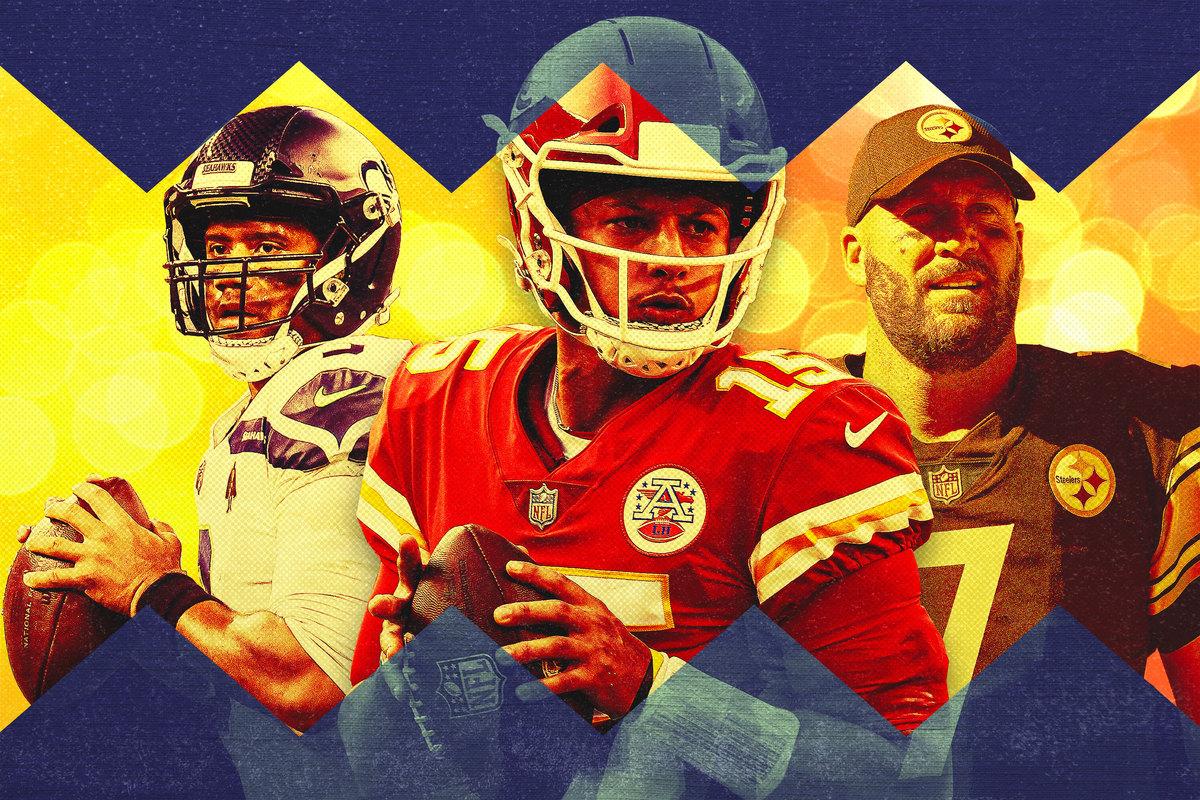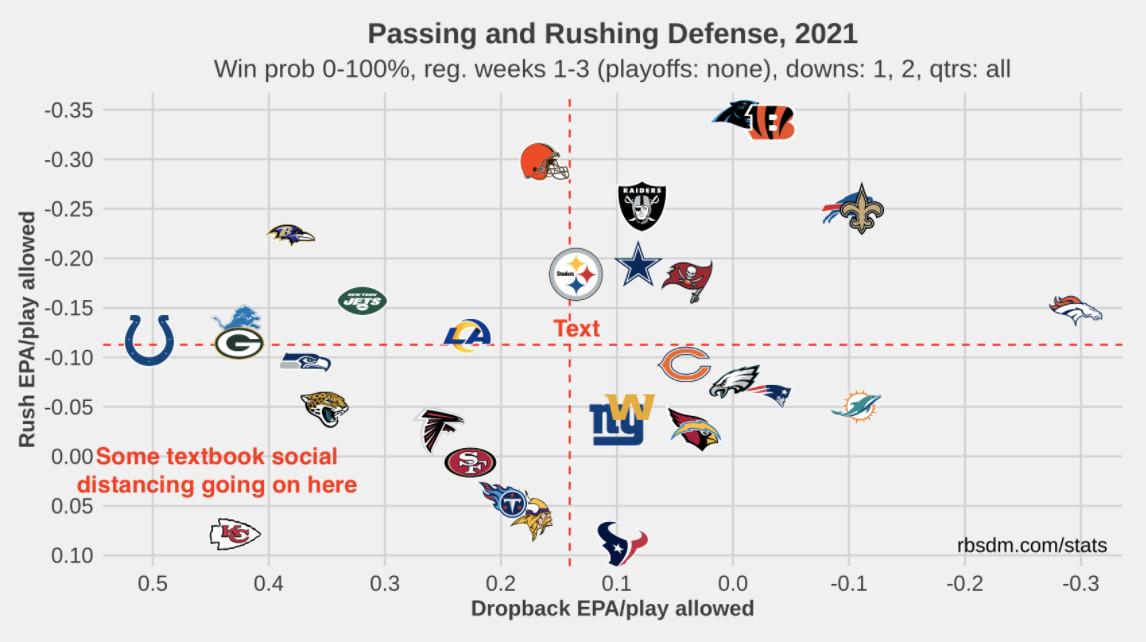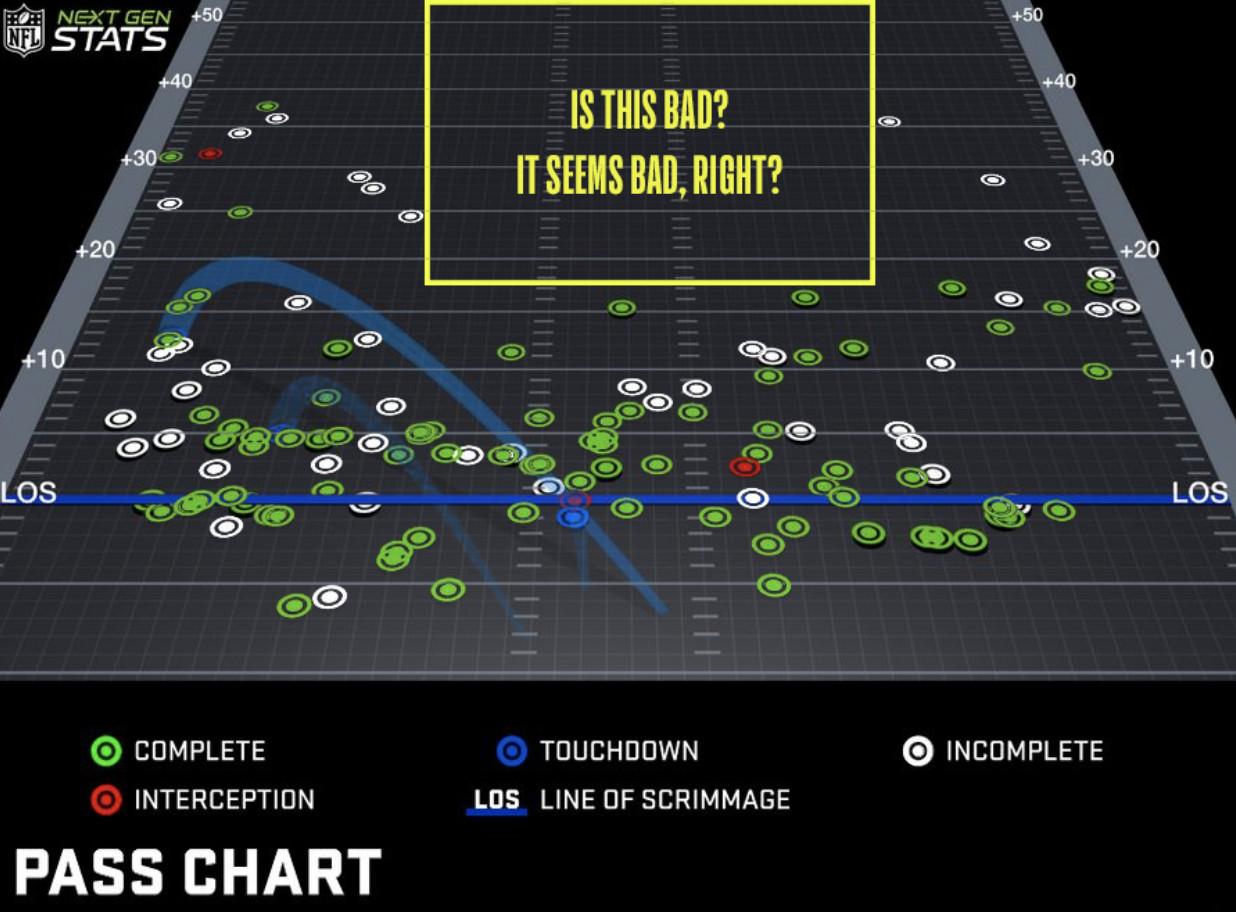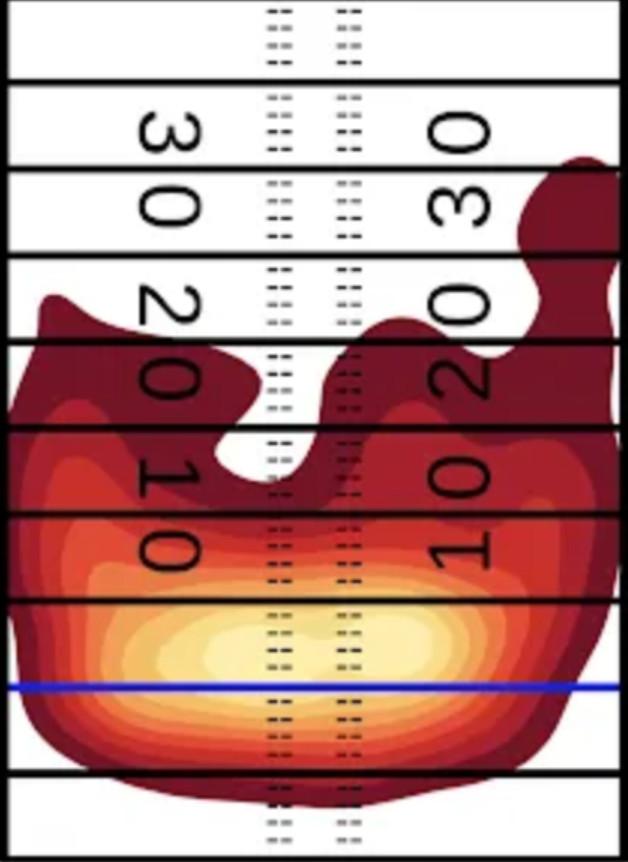Is It Time for These Seven NFL Playoff Hopefuls to Panic?
Sure, it’s still early in the NFL calendar, but with just 17 regular-season games, there’s no time to waste. Some slow-starting teams (a.k.a. the Chiefs) will be fine, while others may already be seeing their postseason dreams slip away.
It’s never too early to panic. Not in the NFL, where the sample sizes are impossibly small and volatility rules. With the 1-1 Cowboys and Eagles set to square off on Monday night, we are pretty much guaranteed to go into the final week of September with 16 teams sporting losing records—a group that, after a home loss to the Chargers on Sunday, even includes the all-powerful Chiefs.
There’s no need to be concerned in Kansas City—not yet at least—but the same cannot be said for a handful of other teams that entered the 2021 season with playoff aspirations. There are currently seven teams with losing records that were given at least a 40 percent chance to make the playoffs by Football Outsiders before the season. And that doesn’t include Washington or Chicago.
So let’s check in on those seven underachievers and try to figure out which teams will be all right, and which ones should start smashing the panic button.
Tier 1: Nothing Else Matters if Patrick Mahomes Is Your QB
Chiefs
“The last-place Chiefs” was not a phrase I expected to type this season, but that’s where we are after a 30-24 loss to the Chargers dropped Kansas City into a two-game hole at the bottom of the AFC West. Patrick Mahomes is still under center, so everything will probably work itself out. But this early-season stumble does make the path to the no. 1 seed harder to navigate: FiveThirtyEight gives the Chiefs just an 8 percent chance to earn home-field advantage, so any margin this team was working with to avoid the wild-card round is all but gone now.
Kansas City will be fine, but that doesn’t mean there aren’t underlying issues that need to be remedied in order to make a third consecutive Super Bowl. I’m of course talking about the defense, which fell to dead last in defensive EPA after Justin Herbert hung four touchdowns on it Sunday. Defensive coordinator Steve Spagnuolo is trying to hold things together with schematic scotch tape, but there’s only so much he can do to coach around his underwhelming personnel. You can see that in Kansas City’s defensive splits. On early downs, when Spags can’t get too crazy with the blitz calls and disguised coverages, the Chiefs are allowing 0.25 expected points added per play and a success rate of 60.6 percent, per RBSDM.com. Those numbers are bad. Like, “a league of their own” bad:

But on third down, when Spagnuolo can reach into his bag of tricks, this unit has been fine, ranking 10th in both EPA and success rate allowed. Typically, when a defense overachieves on third down relative to its performance on first and second, the regression sirens go off, but playing against the Browns’ and Ravens’ run games has skewed the numbers a bit. Had the Chargers been able to run wild, we may be singing a different tune, but Kansas City held Los Angeles’s running backs to 58 rushing yards on 17 carries Sunday and got off the field on third down more often than not. Los Angeles’s 44 percent success rate on third down was the 12th lowest in the league this week, per RBSDM.com.
Even with the uneven start for the defense, the Chiefs are unlucky to be sitting at 1-2. Fluky turnovers have cost this team in the last two weeks. They turned it over in Chargers territory three times on Sunday, which came on the heels of Clyde Edwards-Helaire fumbling away a shot at a game-winning field goal against Baltimore. A few lucky breaks, and Kansas City would be 3-0.
Instead, this is arguably the lowest point of the Mahomes era in Kansas City—the team’s been pretty good since he took over in 2018—and yet it just seems inevitable that things will work themselves out. Plus, with five AFC West games left on the schedule, the Chiefs have plenty of time to reclaim their spot at the top of the division.
Tier 2: Slow Start or Fatal Flaw?
Patriots and Seahawks
If you watched the Patriots offense and Seahawks defense on Sunday, you may have thought you were watching two different sports. The Saints defense smothered New England in the early slate, slowly constricting space and sitting on the shorter throws that make up the bulk of the Pats passing game. The Seahawks defense did the opposite. Seattle’s secondary couldn’t cover anyone, the defensive line got pushed around in the run game, and they couldn’t generate pressure on Kirk Cousins when he dropped back to pass. The games looked very different, but the end result was the same: Both New England and Seattle lost by two scores and fell to 1-2.
Neither team should be written off just yet, but I’m not sure either has an easy fix for their problems. Seattle, of course, has Russell Wilson, which makes it hard to be too pessimistic about their chances. But, if this is what the defense will be like, he and first-year offensive coordinator Shane Waldron essentially have to be perfect. The two were decidedly not perfect in Minnesota. Wilson looked unsettled in the pocket and didn’t wait long enough for his receivers to get open downfield. Waldron’s run game kept the Seahawks on schedule for the most part, but the offense doesn’t function if the passing game isn’t producing explosive plays.
Scoring points hasn’t been the issue in Seattle, however. That would be the defense—specifically the secondary. Cousins averaged a ridiculous 0.49 EPA per dropback in the Vikings’ 30-17 win and didn’t have to make many challenging throws. Cousins threw into a tight window—defined as any target with a defender within a yard of the intended receiver—on just 13.2 percent of his passes against Seattle. Only eight passers are throwing into tight windows less often this season, per Next Gen Stats. Without the benefit of the all-22 tape, it’s difficult to diagnose what caused the issues for the Seahawks, but it looked like a combination of Minnesota’s play designs breaking Seattle’s coverage rules and mental errors by the secondary and linebackers. There were just too many plays that looked this easy:
Cornerback Tre Flowers threw his coaches under the bus after the game, saying the issues in coverage are schematic and the product of a secondary that doesn’t quite understand what the coaching staff wants from it.
Flowers was probably better off keeping that in-house, but he’s not wrong. If this is how the coverages are supposed to work, then there is clearly something wrong with them.
Despite the concerns—and a tough upcoming slate of opponents—I’m still a week or two away from really worrying about the Seahawks. This is a veteran defensive coaching staff that has proved capable of solving issues in-season and getting better results later in the year.
Seahawks Defensive Splits Since 2018
The Patriots, meanwhile, will have to fully rely on their defense if they’re going to get back to the postseason. That’s how bad the offense looks right now. After the 28-13 loss to the Saints, New England is averaging 18 points a game and its offensive efficiency numbers are somehow worse than they were a year ago when there was even less talent on the roster. That group finished 21st in EPA and 14th in success rate, per RBSDM.com. And through three games in 2021, the offense ranks 25th in EPA and 27th in success rate.
A lot of the blame for last year’s offensive struggles was put on Cam Newton, but it’s starting to look like the problems are foundational. The Pats are built to be a power run team, and that doesn’t work in 2021 if you’re not creating explosive plays to spread the defense. Mac Jones has completed only one pass of at least 25 air yards, and he didn’t attempt his first pass of at least 30 air yards until Sunday. There are a lot of reasons for that. It starts with Jones, who is turning down opportunities to push the ball downfield far too often, but it’s hard to put the onus fully on him when his receiving corps is made up of mediocre role players.
Offensive coordinator Josh McDaniels deserves some of the blame as well. The power run scheme makes sense on paper when you have a rookie quarterback and a limited receiving corps, but Jones just doesn’t look comfortable running this system. It’s nothing like the offense he ran at Alabama, where he just spammed RPOs and deep shots off play-action—Jones had thrown only two RPO passes heading into Sunday, per Sports Info Solutions. McDaniels may think he’s protecting Jones by leaning on the run game, but putting him in an offense that makes sense for his skill set should take precedence. Jones has been at his best when the Pats spread it out and put more receivers on the field. He’s averaging 6.8 yards per attempt when New England is in 11 personnel (one RB, one TE, three WRs), 5.6 yards per attempt when in 12 personnel (one RB, two TEs, two WRs), and 3.8 yards per attempt when in 21 personnel (two RBs, one TE, two WRs), per PFF. With only three games of data, we’re dealing with almost meaningless sample sizes here. But it makes intuitive sense that Jones would be better in more spread-style formations.
Simply spreading things out won’t solve the explosive play issue, but it should help to keep Jones out of third-and-long situations where defenses can play man-to-man and dare the Pats receivers to create separation downfield … and for Jones to actually make throws. This current setup provides the offense with no margin for error, and any negative play—whether it’s a penalty, a failed first-down run, or a sack—has the potential to be a drive-ender.
The Pats and Seahawks are two very different teams, but they’re both stuck in a similar spot, having already lost ground to the favorites in their respective divisions. Thanks to Wilson, Seattle’s outlook is a bit more rosy. But it’s hard to imagine either team living up to its preseason hype at this point.
Tier 3: Nothing Else Matters if Ben Roethlisberger Is Your QB
Steelers
Quarterback play is not the only issue with the Steelers’ broken offense right now, but it is the biggest issue. I don’t think I’m capable of describing just how bad Ben Roethlisberger looked in the 24-10 loss to the Bengals on Sunday, but this play does a nice job of summing things up. It’s fourth-and-10 with the game (and possibly the season) on the line, and Roethlisberger immediately throws a checkdown that was doomed to fail the second the ball left his hand.
How do I put this nicely? I … just don’t know if Roethlisberger actually wants to play quarterback anymore—at least not at the level we’re accustomed to seeing it played in the NFL. It’s not just that Roethlisberger is throwing well short of the sticks on a majority of his attempts—we’ve seen plenty of older quarterbacks lead productive offenses with a similar approach. But Roethlisberger is straight up ignoring the middle of the field, where most passing games are built to attack. I mean, just look at his passing chart for the season:

No NFL offense can function like this. Roethlisberger’s arm is cooked, but his physical limitations aren’t necessarily the problem. It’s not what he can’t do that’s holding back Pittsburgh’s passing game; it’s what he won’t do. The 39-year-old is famously anti–play-action and isn’t comfortable operating from under center. Shot plays off play-action are how almost every NFL offense accesses the deep middle of the field, and the Steelers just don’t run them nearly enough. That’s been a problem going back to last year, as you can see on his 2020 heat map, via RBSDM.com:

Making matters worse, Roethlisberger’s mobility is completely gone, so the Steelers can no longer rely on him to create explosive plays by getting outside the pocket and throwing downfield. Now when he’s forced to move, Roethlisberger’s first instinct is to dump the ball off as soon as possible, even if it requires a tough throw into traffic.
We’re not at the point where the Steelers should seriously consider making a change at quarterback—not with Dwayne Haskins and Mason Rudolph as the alternatives—but we’re not far off. Something has to change for the Steelers to compete for a playoff spot this season.
Tier 4: The Widest Range of Outcomes
Vikings and Dolphins
It’s only Week 3 and I’ve already given up trying to figure out these teams. I was ready to give up on the Vikings about midway through the second quarter of their upset win over Seattle, and I sold all of my Dolphins stock as soon as Tua Tagovailoa left last week’s loss to Buffalo with a hip injury. But somehow, some way, both teams reeled me back with their Week 3 showings.
Miami couldn’t pull out a win in overtime against a good Raiders team, but pushing Vegas to the brink bodes well for the Dolphins, who have an easier chunk of games coming up. And Minnesota was able to dispel some of their Seahawk-shaped demons thanks to a joint effort from the offense and defense. Kirk Cousins typically has four or five games a season that might convince you he’s worth what he’s making, and this was one of them. I’ve already covered how bad Seattle’s defense was on Sunday, but throws still had to be made, and Cousins made them, finishing with a plus-6.4 completion percentage over expected (CPOE) and averaging 0.49 EPA a play, per RBSDM.com. On the other side of the ball, Minnesota’s pass rush was at full strength for the first time this season, and it showed:
In an alternate universe, Dalvin Cook didn’t fumble in overtime of the team’s Week 1 loss to the Bengals, kicker Greg Joseph nailed the 37-yard game-winner in Arizona, and the Vikings are sitting atop the NFC North standings at 3-0. Unfortunately, in this universe, good things are not allowed to happen to Minnesota sports teams, so 1-2 it is. The Dolphins, meanwhile, would be 0-3 if not for a late fumble that cost the Patriots a shot at a short game-winning kick in Week 1. But we have yet to see the offense with all of its key components on the field at once. While we can’t say Tua is a clear upgrade over Jacoby Brissett in a vacuum, this system was designed with the 2020 first-round pick in mind, and Brissett is an awkward fit in this RPO-heavy scheme because of his tendency to hold on to the ball.
I don’t know if we’ve learned anything about either team thus far. If you told me one of these teams would be sitting at 6-2 a month from now, I wouldn’t be shocked. But unfortunately for them, 2-6 is very much on the table as well.
Tier 5: The QB Sprained Both Ankles
Colts
Carson Wentz isn’t the most sympathetic figure in the NFL, but it’s hard not to feel for the dude at this point. I honestly don’t know what’s more shocking: that he managed to sprain both ankles at the same time, or that he hadn’t done it sooner. That’s how rotten his luck has been in the past four years.
The same can be said of the Colts, who have had to navigate one of the league’s most tumultuous quarterback situations for the last decade or so. A neck injury ended the Peyton Manning era prematurely. The franchise was gifted Andrew Luck, then promptly broke him before his abrupt retirement in 2019. Philip Rivers tapped out after just one year in Indy. And now ... this.
Not too long ago, the Colts and general manager Chris Ballard were the darlings of NFL media. Their patient approach to roster construction earned them fans on both sides of the league’s analytical spectrum. The stat nerds are suckers for a GM who hoards draft picks and cap space, and Ballard’s background as a scout endeared him to the tape eaters. Then you make one trade for Wentz and everything comes crashing down.
If this season gets even worse—which is certainly possible, if not likely—Ballard could find himself on the hot seat in the near future. The Colts will be back in the QB market a year from now, and if Wentz plays 75 percent of the snaps this season—he’s currently at 97 percent through three games—they won’t have a first-round pick to help aid the search. This season is already lost, and the outlook for 2022 is even bleaker.

